Session Four - The Life of Christ in the Gospels - Overview
Introduction
The four Gospels that form part of our New Testament provide most of the details we know about the life and earthly ministry of Jesus Christ (apart from Acts). The key to understanding the New Testament is Jesus Christ (John 5:39).
His name: Jesus = Saviour
His title: Messiah/Christ = anointed
What about Other "Gospels? (New Testament apocrypha or pseudepigrapha)
There are some additional writings that many in the early church considered to be genuine, but not "inspired". Others were later accounts whose authenticity has never been accepted by the church.
Chronology of the Life of Jesus Christ in the Gospels
Synoptic Gospels (syn, "together with"; optic, "seeing"; thus "seeing together"). Matthew, Mark and Luke are noticeably similar, while John is quite different. The first three Gospels agree extensively in language, in the material they include, and in the order in which events and sayings from the life of Christ are recorded. 91 percent of Mark's gospel is contained in Matthew, while 53 percent of Mark is found in Luke. All of the parables of Christ are found in the Synoptic Gospels (the Gospel of John contains no parables).
Matthew was written primarily for a Jewish audience, Mark (probably the earliest Gospel chronologically) was written for a Roman audience, and Luke for a broader Gentile audience. Matthew quotes extensively from the Old Testament, and his use (32 times) of the phrase "the kingdom of heaven" is unique, ie it is not found anywhere else in the Bible. Luke places emphasis on Jesus' acts of compassion toward Gentiles and Samaritans. Much of Luke 10—20 is unique to Luke. There are many overlaps, but some events are only mentioned in one or two of the four Gospels. John is not as biographical, focusing instead on a limited selection of events and discussions to demonstrate the deity of Christ and generate saving faith. Many passages omit time references, so dating is a bit speculative. The difficulty in explaining the similarities and differences among the Synoptic Gospels is referred to as the "Synoptic Problem" in the world of biblical scholarship.
In the final analysis, this Synoptic "Problem" is not much of a problem at all - God inspired the Gospel writers to record the events surrounding the same Person, yet with slightly different emphases aimed at different readers. Journalists can describe a traffic accident from different perspectives and provide complete accounts for their readership. Besides, what is the problem if the writers compared notes? John's Gospel was written later than the other three, so there was probably not as great a need for a detailed story. John also shows Jesus travelling more extensively than do the other Gospels.
Summary of the Life of Jesus from the Gospels
The Gospels do not try to provide a full account of the life of Jesus. But they do show His authority, His claims and accepted evidence of His miracles and example in life, not as a god, but as a real person. He speaks to human suffering, needs and questions. The writers of the Gospels were describing a real life, not simply taking dictation, or spinning a narrative out of their heads and seeking to stick to the same story. Mediaeval paintings show them all looking piously alike but in real life they were different. They wrote differently. The life and teachings of Jesus were stamped on their memories, but this is because He was real, not just an idea. Early Christians accepted the four Gospels in all their originality as actual accounts of real people and historical events related to who Jesus was, what His significance was and what it means to follow Him faithfully. We do not need to reinvent Him or reconstruct the story across time and space.
About 2000 years ago, Jesus was born in the town of Bethlehem in Palestine. He was unique. Christians believe that He was fully God and fully human. God allowed himself to be born as a man so that he could live and suffer among us, to serve as the perfect atonement for our sin, and to offer forgiveness and salvation to anyone who believes.

Jesus' birth, mission, death and resurrection were foretold by the prophets of the Old Testament and revealed to us by the writers of the New Testament.
Matthew and Luke explain the background to the virgin birth of Jesus in Bethlehem. Bethlehem is an important city for Messianic prophecy. King David, who ruled over Israel about 1,000 years before the time of Jesus, was born in Bethlehem. The prophet Micah, who lived about 700 years before Jesus, announced that Bethlehem would be the birthplace for the Messiah:
"But you, Bethlehem Ephrathah, though you are small among the clans of Judah, out of you will come for me one who will be ruler over Israel, whose origins are from of old, from ancient times." - Micah 5:2.
Ephrathah is the ancient name for the town of Bethlehem in Judah.
But, Israel already had a ruler, King Herod the Great. He was not a true king but had been appointed by the Romans to govern the Jews in the land of Israel. Herod was described by Josephus as a murderous man who ordered the deaths of many of his own family members. When Herod found out that visitors were hoping to find and worship a newborn king, Herod ordered the deaths of every infant in Bethlehem up to 2 years of age, in the hopes of killing the king. An angel warned Jesus' earthly father Joseph of Herod's plans to murder the young children of Bethlehem. Joseph and Mary took the baby Jesus to Egypt and they lived there until Herod died. In ancient times the people of Israel sometimes sought refuge in Egypt (including Abraham and Jacob & his sons, who left Canaan for Egypt during times of famine).
After the death of Herod, Joseph, Mary and Jesus returned to the land of Israel. Joseph was afraid to return to Bethlehem because the town is near Jerusalem, where Herod Archelaus, the son of Herod, now reigned as king. Joseph took his family to the northern district of Galilee, to a small town called Nazareth. This obscure town became the hometown of Jesus.

When Jesus was 12 years of age, he and his mother Mary and Joseph travelled to Jerusalem to celebrate the Feast of the Passover. After the feast ended, Mary and Joseph became separated from Jesus. He had gone to the Temple and conversed with the leaders there. The people were amazed by his depth of understanding and by his knowledge. When Mary found Jesus, Jesus said to her: "Why were you searching for me?" he asked. "Didn't you know I had to be in my Father's house?" (Luke 2:49).
Nothing else is known about the years of Jesus' adolescence and early adulthood.
"Jesus grew in wisdom and in stature and in favor with God and all the people." (Luke 2:52)
Luke tells us that Jesus was about 30 years old when he began his ministry. He left the district of Galilee, which included the town of Nazareth, where he grew up, and travelled to the wilderness of the Jordan River to be baptized. There, John the Baptist drew crowds as he preached and baptized.
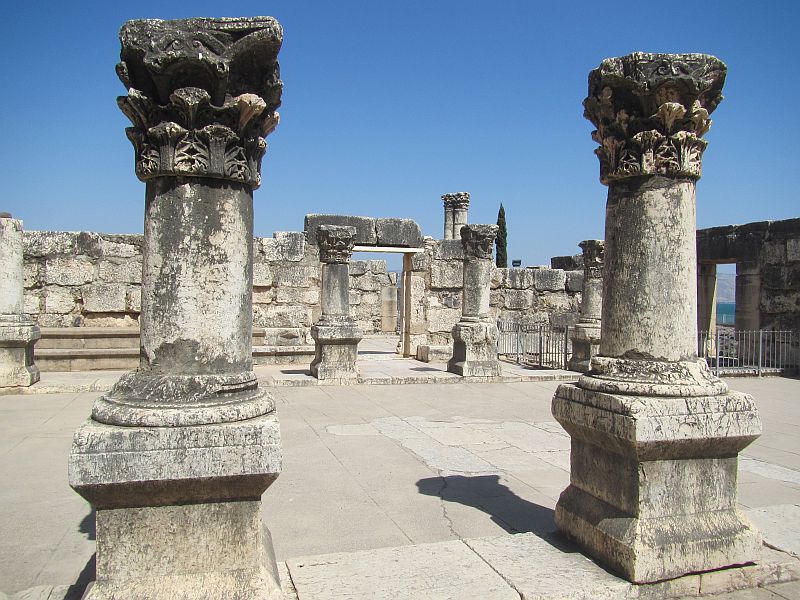
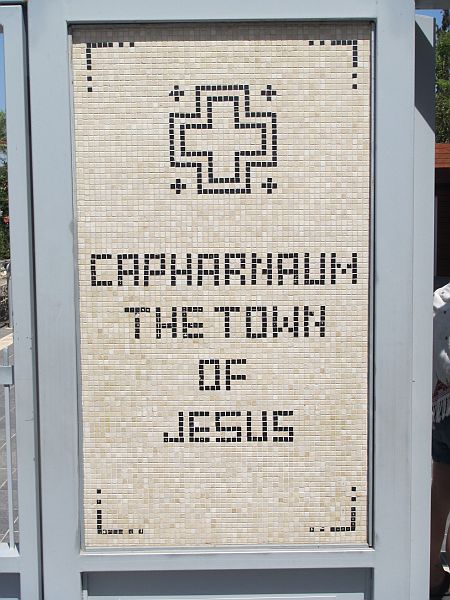
Jesus' first miracle involved turning water into wine. After that, His disciples started to believe in Him, though members of His family always struggled.
Throughout the four Gospels there are descriptions of 34 miracles performed by Jesus. But there may have been thousands, as sometimes when surrounded by a large group of people, the Bible states "He healed them all."
Some highlights from Jesus' ministry years:
- cleanses the Temple in Jerusalem
- talks of God's love and plan of salvation
- tells a Samaritan woman about "water of life"
- early ministry in Galilee
- heals a royal official's son
- announces that he is the Messiah
- is rejected as the Messiah
- the second year of Jesus' ministry is sometimes referred to as the "Year of Popularity"; He performed many miracles during this phase of his ministry and became increasingly popular
- explains he is salvation; God is his father
- sends out Twelve Apostles whom He has chosen
- gives the Sermon on the Mount
- brings back to life a widow's son in Nain
- talks about the "unpardonable sin"
- calms a raging storm
- brings back to life Jairus' daughter
- heals two blind men
- feeds 5000 people
- walks on water
- prophesizes his own death
- is transfigured, meets with Moses and Elijah
- talks about humility
- talks about forgiveness
- heals a man who was born blind
- raises Lazarus from the dead
- triumphal entry into Jerusalem
- question about paying taxes
- widow's offering
- great commandment (the Golden Rule)
- plot against Jesus
- Lord's Supper instituted
- betrayed by Judas
- Peter denies knowing Jesus
- interrogated, mocked and put on trial
- crucified
- buried
- Mary Magdalene discovers the empty tomb
- Jesus appears to Mary Magdalene
- resurrection appearances
- Jesus appears before Thomas
- Great Commission
- Jesus ascends into Heaven
Jesus was a Jew. His daily habits, historical context and message to those who understood Judaism, were all Jewish. He called Himself Son of David. He was born "under the Law", and submitted to it. He learned the Scriptures from childhood. He held His own when in the presence of the teachers of the Law. He used OT Scriptures to defeat Satan during his first recorded temptations. He quoted from it in his messages, eg the Sermon on the Mount and to his detractors, who agreed with his interpretation of the essence of the law. He referred to events in the OT, eg Adam, Abraham, Moses, David, Solomon, the Queen of Sheba, Jonah, Isaiah. The Last Supper was based on Jewish tradition. He was the "Lamb of God". He spoke Aramaic, or Syriac (the Gospels contain 26 words in Aramaic that he spoke, with a Galilean accent); he would also have spoken Greek. The "lost sheep of the house of Israel" (Matthew 10:5, 6) were his target audience. He went to synagogues, and to the Temple (during special feasts). When he addressed the Pharisees, he drew on their traditions and emphases (eg the way they fasted, cleaned cups and plates, fasted, prayed in the temple). However, he was prepared to challenge their conventions, eg the woman taken in adultery; He put His Law above that of Moses (while not diminishing the Law). He addressed cultural stereotypes, eg re Roman rule, tax collectors, Samaritans.
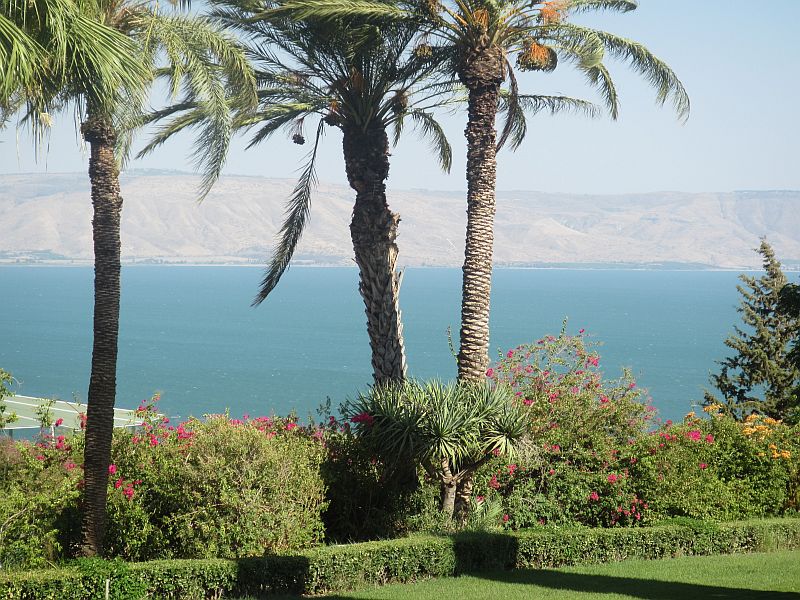
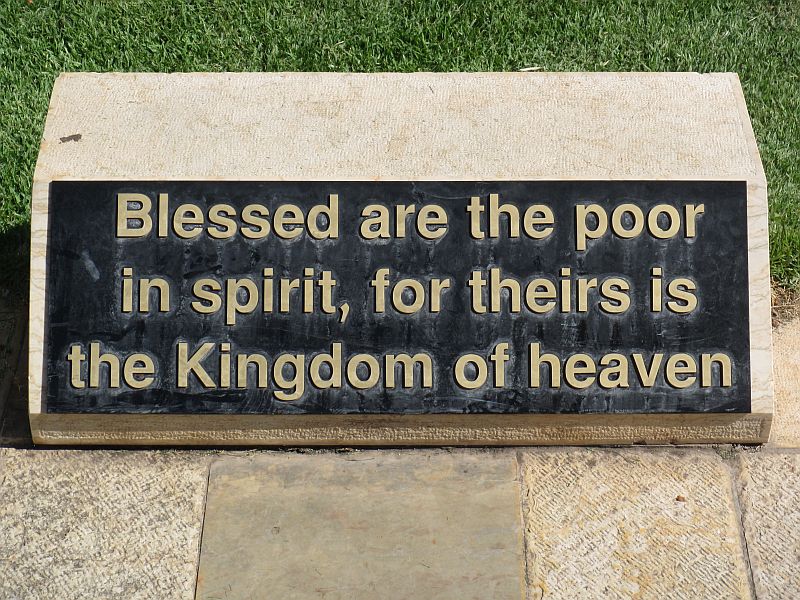
Jesus spent most of His life in the north, around Galilee.
According to Josephus, there were around 200 towns and villages in Galilee at the time. There were 10 "cities" in the vicinity of the Sea of Galilee; they were known as the "Decapolis", and included Gadara, Gerasa and Pella (where many early Christians fled to ahead of the fall of Jerusalem). The Sea of Galilee (or Lake Tiberias, named after Caesar Tiberias, 14-37AD) was a well-stocked source of fish. There were few Gentile settlements around Nazareth (26 kms from the Sea of Galilee), a sleepy village in a fertile area on a high ridge. Archaeologists believe that Nazareth at the time of Jesus would have had around 500 inhabitants. Nazareth today features various sites associated with Joseph, Mary and Jesus.
Jesus eventually settled in Capernaum, Simon Peter's village, on the road from Damascus to Jerusalem; a better base for an itinerant preacher and his delegates (Hebrew "shaliach", literally "one sent"; the Greek is apostolos, or apostle).
When Jesus set Himself against the world's religions in at Caesarea Philippi (Matthew 16:13-21), the centre of worship of Pan, the Greek God of nature, He was making a break from them all.
Son of God. The Gospels contain 81 references to Jesus as Son of Man, only used by Jesus referring to Himself; the term came from the Hebrew Scriptures, ben Adam, used by Ezekiel 90 times; it emphasizes His humanity; cf Daniel's use of the term (Daniel 7:13) denotes a high status than mortal being (cf Luke 21:27). Jesus was setting the stage for events about to unfold in Jerusalem.
Jesus entered Jerusalem at the beginning of Nisan, the Passover month. This was two years after Pilate suppressed an uprising in Jerusalem. Crowds increased at this time of the year. Roman authorities were on high security alert. There had been other self-declared Messiahs.
We will look more closely at the circumstances and events of so-called "Passion Week" during our consideration of the individual Gospels. (Mark contains more details than the other Gospel records.)


Jesus' confrontation with the jealous old religious establishment led to his betrayal, trial (under Roman civil law) and crucifixion (the most common means of execution of criminals). The site of the Last Supper today is a Gothic construction dating from 1342. There are declared two sites of Calvary and two "tombs of Jesus" in modern-day Jerusalem. Today's Via Dolorosa was a later construction, as the entire city was destroyed after the Second Jewish Uprising in 132-135; nevertheless, many thousands of pilgrims re-trace the route of Jesus to Golgotha via this road (which ends up at neither of the traditional crucifixion sites). Most Christian holy sites in Jerusalem have been under the control of the Franciscans since 1350.
Jesus' life did not end in death; He rose from the dead. Because he was perfect, he is able to open the doors to the Kingdom of God. Because he was sinless, he is able to forgive us our sins so that we too can be accepted into the Kingdom of God. The resurrection is pivotal to Christianity (1 Corinthians 15:12-19).
Jesus the God Man
The divinity and humanity of Jesus have been divisive in church history. There are two main reasons for this.
- Was Jesus Christ God or man? Was he equal to the Father, or was he subordinate? Of what substance was He made? Did He have one nature, or two, or two in one? Was it possible for the divine and human to co-exist in Him? How could the transcendent God take on human form and enter time and space? These were seminal theological issues at the time and occasioned bitter debate and frequently physical conflicts within the Church. In the end, the Council of Chalcedon issued a Declaration in 451 that rejected any doctrine that inferred a single nature in Christ, stating emphatically that he has two natures (God and man) in one person and substance. Instead of uniting the Christian community it led to further controversy on the nature of Christ, and ultimately to schism.
- The Gnostics (more about them when we consider 1, 2 and 3 John) variously believed that: Christ did not have a real body; OR He had a real body, but it was not really real (as they believed matter is inherently evil); OR Jesus and Christ were completely distinct (Christ was a power that descended on Jesus at His baptism and left Him at the crucifixion); OR Jesus was a lesser "emanation" of God, because He was human; God cannot take on a physical form.
The Gospels portray the deity of Christ:
- called God - John 1:1; 20:28
- called the Son of God, even before His birth - Luke 1:35
- named Emmanuel, or "God with us" - Matthew 1:23
- called Lord - Matthew 22:43-45; Luke 2:11
- worshipped as God - Matthew 14:33; 28:17; Luke 5:8; 24:52; John 20:28
- pre-existent - John 8:58
- self-existent - John 1:4; 5:26
Jesus' authority was demonstrated in His:
- teaching - Matthew 7:24; "I say" 49 times in the Sermon on the Mount (setting His teaching in the context of, and over and above, that of Israel's founders and leaders)
- power over sickness and disease - Matthew 12:15
- command power over demons - Mark 1:24-27
- command power over nature - Matthew 8:27
- divine ability to forgive sins - Mark 2:10
- collaboration with the Father in producing miracles - Mark 6:41; John 11:41, 42
- power over death - John 11:43, 44
The humanity of Jesus Christ was evidenced in the Gospels as follows:
- had human ancestry - Son of Abraham (Matthew 1:1); Son of David (Matthew 1:1, 9:27, 12:23, 15:22, 20:30, 31, 21:9, 15)
- born to human parents - Matthew 1:1, 16, 18, 2:11, 13, 14, 20, 21, 12:47, 13:55; Mark 3:31, 32, 6:3; Luke 2:34, 48, 51, 3:23, 8:19, 20; John 2:1, 3, 5, 12, 6:42, 19:25, 26
- started His human life as a baby - Luke 2:12, 16
- was a child - Matthew 2:11, 13, 14, 20, 21; Luke 2:17, 27, 34, 40
- was a boy - Luke 2:43
- submitted to His parents - Luke 2:51
- had a developed personality - Luke 2:40
- called a man and recognized as such by the community - Matthew 8:27, 12:23, 24, 13:54, 56, 26:61, 72, 74, 27:19, 47; Mark 2:7, 15:39; Luke 5:21, 9:9 15:2, 23:4, 6, 14, 18, 22, 41, 47; John 4:29, 6:52, 7:12, 15, 25, 27, 31, 35, 46, 9:11, 16, 24, 29, 33, 10:33, 41, 11:37, 47, 50, 18:29, 30, 40, 19:5, 12
- had human siblings - Matthew 12:47, 13:55, 13:56; Mark 3:31, 32, 6:3; Luke 8:19, 20; John 2:12, 7:3, 5, 10;
- had a human body - Matthew 26:12, 27:58, 59; Mark 14:8, 15:43, 45; Luke 23:52, 55, 24:3, 23, 39; John 1:14, 2:21, 6:51-56, 19:38, 40, 20:12, 20:25, 27
- had a soul - Matthew 26:38; Mark 14:34; John 12:27
- had a spirit - Matthew 27:50; Mark 2:8, 8:12; Luke 23:46; John 13:21
- had a human name - Jesus = Joshua - Matthew 1:21
Jesus became a man through what theologians call the "incarnation", lit. taking on human flesh. He had the normal limitations of mankind:
- experienced hunger Matthew 4:2, 21:18; Mark 11:12; Luke 4:2
- ate food - Matthew 4:2; 11:19, 12:1, 21:18; 26:17, 26; Mark 14:18, 22; Luke 7:34, 15:2, 22:19, 24:41-43 (NB this was after His resurrection); John 18:28
- experienced tiredness/slept - Matthew 8:24; John 4:6
- became thirsty - John 4:7, 19:28
- drank - Matthew 11:19; Luke 7:34
- tried to escape the crowds - Luke 4:42
- wept at the death of a friend - John 11:35 (cf Matthew 26:38; Mark 14:34; Luke 19:41)
- was tempted to sin - Luke 4:2-13
- accepted limitations in His knowledge - Mark 13:32; John 11:34
- needed to depend on God for strength; prayed - Mark 1:35; John 6:15
- needed to depend on the Holy Spirit - for miracles - Matthew 12:28
- experienced joy - John 15:11
- bled and physically died - John 19:30, 34
Conclusion
The purpose of the Gospels is to present us with the real Jesus. While understanding Jesus in history is important, Christian faith is not founded on historical investigation alone, but an encounter with the risen, living Lord. The Gospels bring us closer to Him, to allow Him to shape and challenge us. They witness to Jesus' significance, His purpose for our lives, His authority and ability to bring about that purpose. We need to ask ourselves: how would Jesus shape our lives together as a community of His followers?
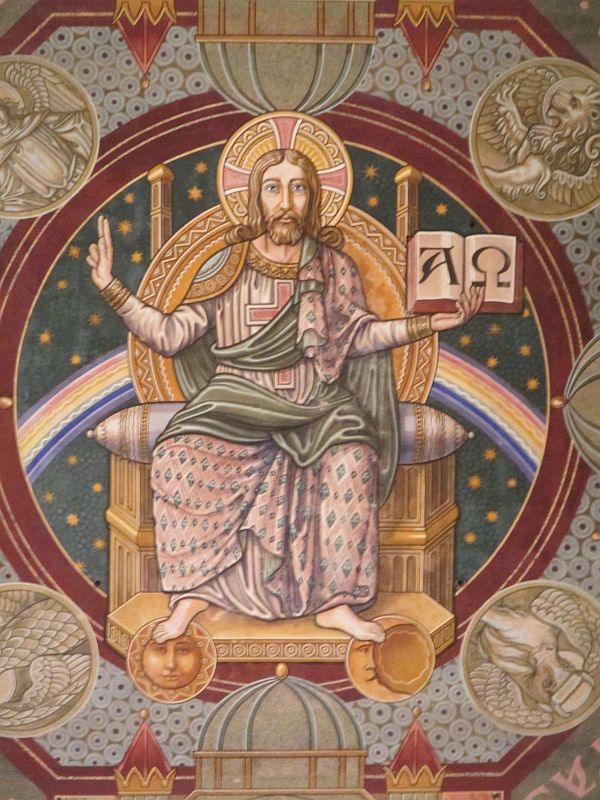
Harmony of the Gospels (Sample)
| Event | Matthew | Mark | Luke | John |
|---|
| Jesus blesses little children | 19:13-15 | 10:13-16 | 18:15-17 | |
| Rich young ruler | 19:16-26 | 10:17-27 | 18:18-27 | |
| Disciples' reward | 19:27-30 | 10:28-31 | 18:28-30 | |
| First shall be last | 20:1-16 | | | |
| Jesus predicts His death | 20:17-19 | 10:32-34 | 18:31-34 | |
| Request for James and John | 20:20-24 | 10:35-41 | | |
| Relationships between disciples | 20:25-28 | 10:42-45 | | |
| Blind men healed near Jericho | 20:29-34 | 10:46-52 | 18:35-43 | |
| Zacchaeus is converted near Jericho | | | 19:1-10 | |
| Jesus is near Jerusalem | | | 19:11 | |
| Blind men healed near Jericho | | | 19:12-27 | |
| Journey to Jerusalem for Passover | | | | 11:54 |
| Jesus discussed by Jews and Priests | | | | 11:55-57 |
| Jesus in Bethany | | | | 12:1 |
| Mary anoints Jesus in Simon's house | | | | 12:2-8 |
| Mary's deed recounted | 26:6-13 | 14:3-9 | | |
| Crowds come to see Jesus and Lazarus | | | | 12:9 |
| Leaders conspire to kill Lazarus | | | | 12:10-11 |
| Jesus ascends to Jerusalem | 21:1 | 11:1 | 19:28 | |
| Two disciples get a colt | 21:1-7 | 11:1-7 | 19:29-35 | |
| Triumphal entry into Jerusalem | 21:8-11 | 11:7-10 | 19:35-38 | 12:12-18 |








